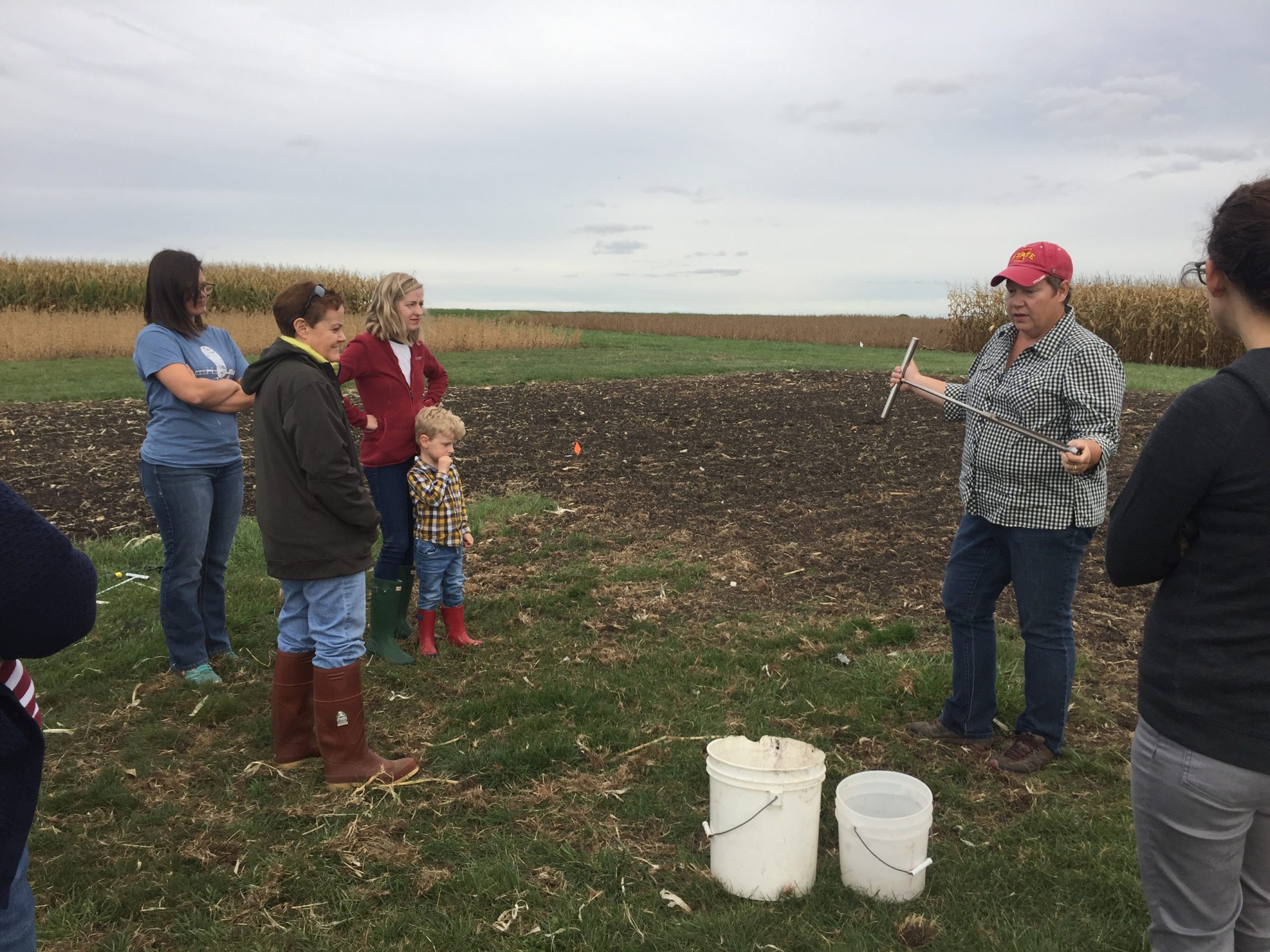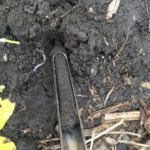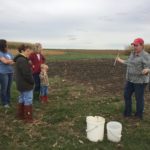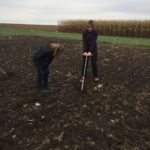Photos of the 2017-2018 Agronomy in the Field cohort for Central Iowa at the ISU Field Extension Education Lab. Photos by Hanna Bates.
An education in soil sampling
Last week I attended Agronomy in the Field, led by Angie Reick-Hinz, an ISU field agronomist. The workshop focused on soil sampling out in a field. The cohort learned a lot of valuable insight into not only the science of soil sampling, but also practical knowledge from out-in-the-field experiences.
Taking soil samples in a field is critical in making decisions about fertilizer, manure, and limestone application rates. Both over and under application can reduce profits, so the best decision a farmer can make is based on a representative sample that accurately shows differences across his/her fields.
What do you need?
- Sample bags
- Field map
- Soil probe
- Bucket
When do you sample?
After harvest or before spring/fall fertilization times. Sampling should not occur immediately after lime, fertilizer, or manure application or when soil is excessively wet.
Where do you sample?
Samples taken from a field should represent a soil area that is under the same type of field cultivation and nutrient management. According to ISU Extension, the “choice of sample areas is determined by the soils present, past management and productivity, and goals desired for field management practices.”* See ISU Extension resources for maps and examples for where in the field to take samples.
Most importantly…
Like with everything that happens out in the field, it is important to keep records on soil testing so that you can evaluate change over time and the efficiency of fertilizer programs. As we say at the Iowa Water Center, the more data, the better! The more we learn about the soils, the better we can protect and enhance them. Healthy soils stay in place in a field and promote better crop growth by keeping nutrients where they belong during rain events. Not only can we monitor soil from the ground with farmers, but with The Daily Erosion Project. These combined resources, with others, can provide the best guidance in growing the best crop and protecting natural resources.
Interested in Agronomy in the Field? Contact Angie Rieck-Hinz at amrieck@iastate.edu or 515-231-2830 to be placed on a contact list.
* Sawyer, John, Mallarino, Antonio, and Randy Killorn. 2004. Take a Good Soil Sample to Help Make Good Decisions. Iowa State University Extension PM 287. Link: https://crops.extension.iastate.edu/files/article/PM287.pdf




